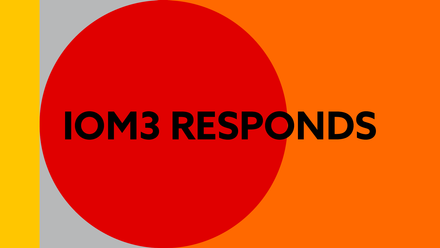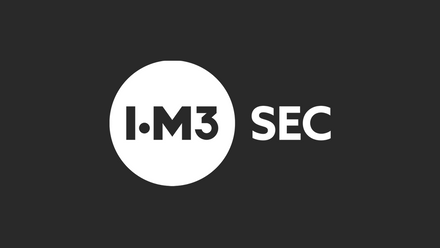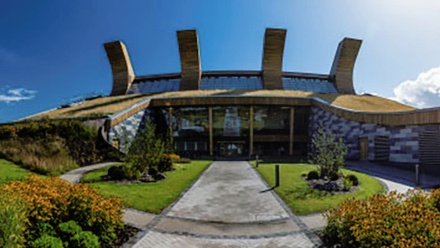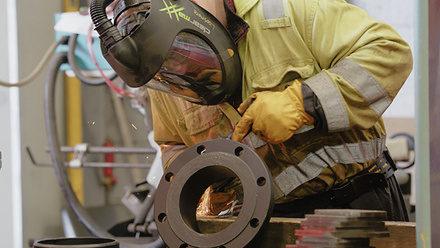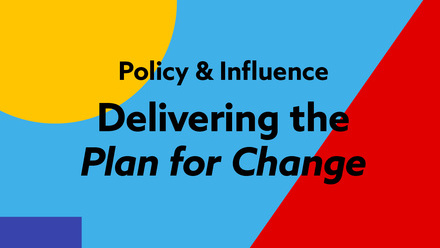Pitching for research funding
Securing funding for research is a job in itself – it requires research, we help you navigate the funding jungle.
This year, Chancellor of the Exchequer, Rishi Sunak, announced that R&D spending will rise to £22bln by 2024-25. He noted that this is both the speediest and largest increase ever.
We ask individuals who deal with funding applications and write them to give their expert opinion on the challenges, opportunities and support available.
The Knowledge Transfer Network perspective
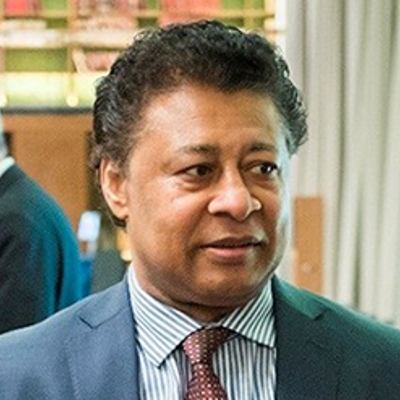
The ease with which business gains access to academic research – its facilities and knowledge base – is critical.
Dr Robert Quarshie, Head of Materials at the Knowledge Transfer Network (KTN), acknowledges that applying for funding can be exhausting and sometimes can include disappointments.
He says, ‘A successful funding application is one that addresses what the fund provider is asking for. Each funder will have their own funding criteria developed to help meet their strategic objectives. It is always a good idea to make sure you understand what they are looking to achieve in the long run.’
Quarshie adds that sometimes funders are on the lookout for ideas that are distinctive and strong so that they can be exploited at home and on a global scale. He explains that these individuals or organisations would only be interested in taking on projects at certain readiness levels or with a direct focus on its intended market. He puts forward that to ‘stand a chance in gaining funding’, you need to:
- Read the eligibility rules thoroughly – Find out if your proposal can be strongly aligned to the scope of the call you are responding to. It is critical you understand what is fundable and what is not in the scope of the call. This may seem obvious, but eligibility and alignment to scope are the most important things to get right from the outset to avoid wasting precious time putting together a proposal that has no chance of getting funded because it is not a good fit.
- Avoid jargon – Explain in simple terms why your research is needed and how your project improves on the nearest, current, state-of-the-art. Use language that makes your idea easy to identify, ensuring you describe how genuinely novel it is.
- Demonstrate freedom to operate – Make sure you can explain, with evidence, that you have the freedom to operate, including results of patent searches, literature surveys and market/competitor analyses.
- Showcase timeliness – Make sure you argue convincingly that the time is right for your research project.
- Make a convincing value proposition – Articulate clearly the social, environmental and economic benefits that can come out of your project. In all cases, do not ignore the potential negative impacts. These should be detailed and describe how you plan to mitigate so they are eliminated or minimised and their mitigation/minimisation should be described or justified.
- Present a strong business case where this is required – Make sure your business case presents a credible opportunity, describing how money can be made from your idea. Give an indication of the market size and what portion is accessible to your project’s outcome. Ideally explain why the market need exists and what is required to meet it before going on to describe how it will be addressed. It is always good to provide a robust linkage between your proposed solution and its commercial outcomes. Best to avoid writing too much about the solution without first describing the issue. Include a description on the dynamics of your target market, stating whether it is growing and how fast. Include, for example, what you see as the trends affecting this market, the nature of competition and the barriers to entry.
- Have a credible plan for your research and innovation – It is important to explain what you will do in the project. Be clear about your approach and break down the project into key work packages, timescales and milestones. Provide an appropriate level of detail, making sure you allocate appropriate resources to each task and being clear on costs and interdependency with other tasks. Fully describe how you intend to manage the project.
- Put together the right team or consortium – If you are responding to a call that requires collaboration, your proposal is as much about the team as it is about the quality of the idea. You need to demonstrate that the project will be delivered by a team or partners with the right skills, experience, resources and facilities, and that they will be in a position to exploit the results themselves or able to build future collaborations for this. In your proposal, describe clearly what value each team member or collaborator will be bringing that is core to the delivery of the project. Make sure you can show that everyone has an active role and will benefit from the project. Address any gaps in your team at the time you are ready to submit your proposal and explain how you plan to fill them.
- Be clear about why you need funding support from the call you are bidding into – Explain why other funding options are not appropriate or will be difficult to access for your project. Describe any attempts you have made in the recent past to secure funding from alternative providers.
- Describe the risks involved – These can be management, technical, commercial and/or environmental risks. You might be tempted to play down the risks and portray the project as a sure thing. Do not be tempted, as risk is not a bad thing. For a game-changing idea, risk is likely to be high and funders appreciate this. Ensure you undertake a complete risk assessment across all the categories listed above and, for each identified risk, describe what mitigation strategies you will follow to minimise and control it.
How can the KTN help you?
Quarshie highlights how the KTN works to help researchers succeed. Its efforts include facilitating effective networking between researchers so that they can find the right partners to build a consortium, and then helping them to ‘gain access to the appropriate funding source’, he says.
‘We help researchers to explore and showcase their ideas in a structured and creative way to attract interest from potential collaborators and funders. We explain eligibility rules for funding calls and provide tips on how to write the best proposal they can,’ explains Quarshie.
Researchers can also seek support from the in-house team of sector and technology experts and connect with the KTN’s network of businesses, academics, fund providers and other innovation support providers.
Quarshie adds that the KTN team meets with companies that aspire to grow to assess ‘what they are trying to achieve, how they could speed up innovation and the kind of research collaborations they should be looking for. We listen to companies and the research base, enquire and interpret their research and innovation needs, and help them out with insights, advice and connections’.
He continues, ‘We also host cross-sector events across the UK that are designed to inform and encourage new connections and collaborations. We work closely with other members of the Innovate UK family, helping businesses to access the right expertise in the research base and the specialist facilities of Catapults and other research and technology organisations.’
What is the most common area that researchers need help with?
Quarshie notes, ‘Researchers place a lot of emphasis on developing strong links between their research activities and business opportunities in order to create impact for their research outputs. The key is to find ways of translating their research into innovative ideas that business can readily adopt. The ease with which business gains access to academic research – its facilities and knowledge base – is critical. More is being done to enable stronger links through networking initiatives, helping researchers to connect to businesses and funders in an open and honest environment.’
Robert Quarshie’s top application tips:
- Put effort into presenting the most compelling proposal to show that your application is better than all the other applications that are being assessed for funding.
- Only go for projects that are going to deliver real value to your consortium. This way you will be putting forward projects with the highest chance of success.
- Get someone you trust who is not a specialist in your field to read your application. This often helps to highlight areas where the application could be better expressed
The Engineering and Physical Sciences Research Council (EPSRC) perspective
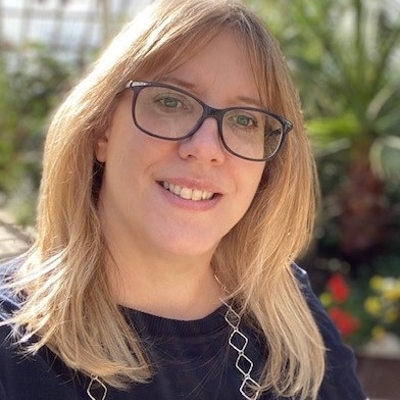
Why does it matter? Why now? Why you?
Claire Spooner, Head of Advanced Materials at the Engineering and Physical Sciences Research Council (EPSRC), explains that any funding application or proposal should have objectives that are detailed in a clear manner, they should be testable and with a well-defined purpose.
She reinforces the importance of getting to grips with the detail of the funding providers’ specifications. ‘[…] it is worthwhile taking time to familiarise yourself with these and ensure that your proposal clearly addresses your targeted source of support. Then you should display your genuine interest, understanding and enthusiasm for the work, bearing in mind - Why does it matter? Why now? Why you?’.
Spooner highlights that the Principal Investigator’s response is one of the key documents in a proposal and it is especially important that this particular submission focuses on all the points stipulated by the reviewers. ‘The panel does take this into consideration when concluding on which proposals to support. Supplying evidence and clear responses are crucial – even if you do not agree with the review, you should reflect on their comments in your response,’ she states.
And writing in plain English is vital. ‘Your proposal is likely to be seen by many people, including some who will not be familiar with your particular specialism. It is always valuable to get a layperson to read your submission beforehand as they will be able to comment on how clearly the document articulates the research needs.’
Claire Spooner’s top application tips:
- Read the call specification and assessment criteria to understand exactly what is being requested. Reviewers and panellists refer to these documents when looking at submissions and often highlight when the proposal doesn’t fit the call.
- Prepare a draft proposal and consult on it. If you have never sent in a proposal to the USA before, try to get the advice of someone who has already been successful. A good way of seeing what an effective proposal looks like is to become an expert peer reviewer and get exposure to different submissions and styles.
- Talk to your research office and draw on the support that they can give you in putting together your application and calculating your costings. They can also advise on which papers should be submitted as part of your proposal.
The Researcher perspective

Keep thinking of new ideas and make an effort to follow the recent literature.
Dr Olof Johansson, Lecturer in Chemical Physics at the University of Edinburgh, talks about how he balances teaching, research and applying for grants, and what the main challenges are.
What are the most challenging aspects in balancing innovation with securing funding?
As a lecturer, there are a lot of things that take up our time from teaching and admin to supervising students and attending conferences. Some funders in the UK do not have any deadlines so it is important to set aside time to write the grant applications. I find it is most efficient to do as much as possible in one go, so set aside a couple of weeks and keep the number of other tasks to a minimum. In terms of writing, I find it is better to keep writing and not get stuck even if the text is not good or the research idea is not exciting. It is easier to edit a poorly written text or ill-thought idea then to not write at all.
There are many courses on writing grants delivered internally within the university, but also online and from various organisations such as the Royal Society of Chemistry and the Institute of Physics. I have found that the best way to learn is to write as many applications as possible and ask successful people in your department to give feedback on your proposals. I usually advice early-career researchers to start writing grants as a PhD student by applying for travel grants etc. It is also a good idea to ask for other people’s successful applications.
What is your advice to other researchers?
Keep thinking of new ideas and make an effort to follow the recent literature. It is important to keep up with the big questions in the field. Keep an eye on the research that goes on around you and try to form new connections. I am always very open about my ideas and like to discuss them with other people in my field. I have found that people are often very generous and like bouncing ideas, particularly at conferences.
The proposal must be exciting to read, so get to the point quickly about why the research is important/interesting and why your method will help tackle this problem. Also make sure that a large part of the proposal is accessible to a broad audience who are not experts in your field. Even some reviewers might not be experts on all aspects of the work, and this is particularly true for grant panels.
For postdocs and PhD students applying for fellowship/tenure-track position, it is useful to do something different to the work you did during your PhD. The project should fit into your long-term interests/goals and ideally combine skills from PhD and postdoc. It is a difficult balance to strike between novelty and making sure you can convince reviewers that you can deliver the project. The best advice is to ask experienced colleagues to read your proposal and give feedback. It is also a good idea to speak to your postdoc advisor to find time for preliminary measurements.
Olof Johansson’s top application tips:
- Don’t give up and keep trying. Even the most successful scientists have many of their proposals rejected. So, don’t compare yourself to others because you will only see their successes, not all the underlying failures.
- Ask for help. Get other people to give feedback on the proposal. Even better, write grants with more senior colleagues and see how they work. Ask the best people in the world for advice if you want to use a new technique. For information on grant calls, ask colleagues and sign up for mailing lists from research councils and the research office at your university. Follow funders on Twitter.
- Try to enjoy the creative process – coming up with new ideas and being curious is of course very stimulating. Be ambitious about your project and really try to think what the big questions in your field are.
How can IOM3 help you?
The Institute offers small grants to help members with expenses when travelling long distances for conferences. These grants are normally for members travelling outside their country of residence.
IOM3 has two travel funds, The Andrew Carnegie Research Fund, and The Metals and Metallurgy Trust – for works in materials, metals and metallurgy fields. Members can apply to one fund per calendar year. The travel grant applications are open all year round until the fund runs out. The travel grant applications are judged by Craig Davies FIMMM.
Members are expected to present the Institute with a report about the conference. Applications for the travel grant can be completed on the Institute’s website.
The Institute also awards several scholarships and bursaries in the minerals and mining disciplines. The awards available are Bosworth Smith Trust Fund, Centenary Scholarship, Edgar Pam Fellowship, G Vernon, Mining Club Award, Stanley Elmore Fellowship Fund and the Tom Seaman Travelling Scholarship.
The Institute judges the applications received for each award in respect of academic excellence and scholarships. The application must therefore specify ability.
Applicants for these awards must ensure that the fund from which support is being sought is relevant to their field of interest. Applications for the scholarships and bursaries grant start in October and the closing date is at the end of March. These are then reviewed by the judging panel in April and the grant rewarded if successful.


